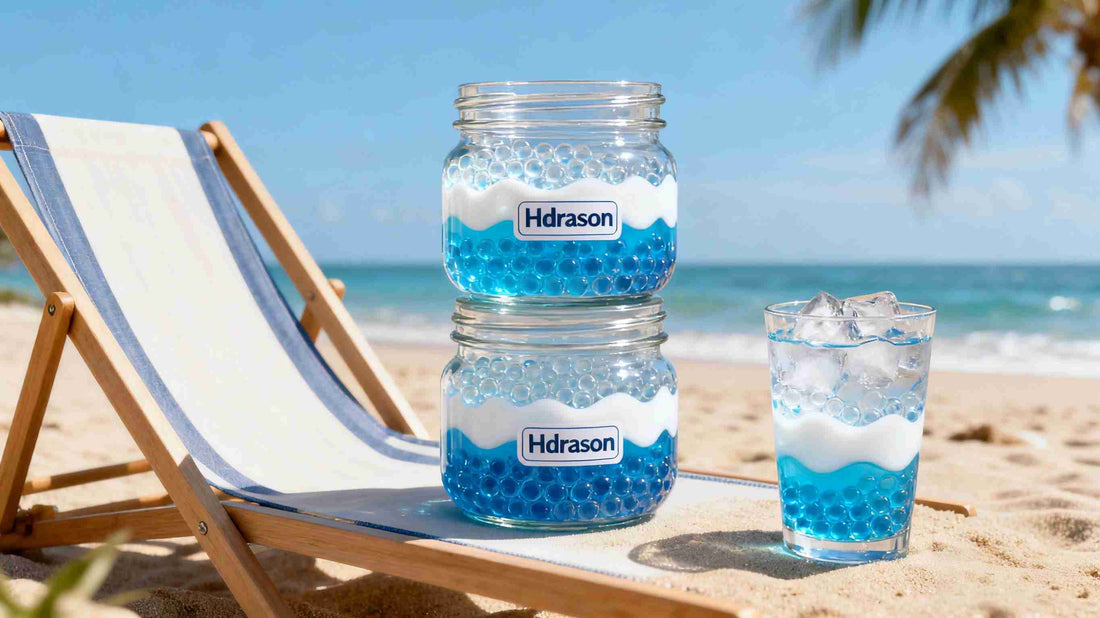
How long to soak gel blaster bullets?
Share
If you’ve ever stood over a bowl of dry gel beads, wondering “Is this enough time?” or “Did I soak them too long?”, you’re not alone. Soaking time is one of the most overlooked yet critical steps in gel blaster prep—get it wrong, and you’ll end up with beads that jam your blaster, break mid-shot, or even cause injury. But “how long to soak” isn’t a one-size-fits-all answer: it depends on bead size, water temperature, brand, and even your urgency to play. This guide breaks down the science behind gel bead soaking, the factors that change soak time, and how to nail the perfect duration every time.
1. First: Why Soak Time Matters (It’s Not Just “Getting Wet”)
Before diving into timing, let’s clarify why soaking is non-negotiable—and why cutting corners backfires. Gel blaster bullets (hydrogel beads) are made of superabsorbent polymer (SAP), which needs water to transform from hard, tiny pellets (2–3mm) into soft, safe projectiles (7–10mm). The right soak time ensures three critical outcomes:
- Safety: Under-soaked beads are dense and rigid—they act like small plastic pellets, causing painful bruising or damaging your blaster’s piston. Over-soaked beads are mushy and prone to bursting, but they won’t hurt; they’ll just jam your barrel.
- Performance: Properly soaked beads have a uniform “hydrogel structure” (95% water, 5% polymer) that balances weight and flexibility. This means a consistent range (20–30 meters for standard beads) and accuracy—no wild, off-target shots.
- Blaster Health: Beads that are too dry or too wet strain your blaster’s feed mechanism. Dry beads scratch barrels; over-soaked beads stick in magazines. The right soak time extends your blaster’s lifespan.
In short: Soaking time isn’t a “suggestion”—it’s the line between fun, safe play and a frustrating, potentially costly mess.

2. The Science of Soaking: Why It Takes 3–4 Hours (On Average)
To understand soak time, you need to unpack how SAP absorbs water. The process has two key phases, and each takes time to complete:
Phase 1: Osmosis (0–2 Hours)
When dry SAP beads hit water, osmosis kicks in. Water molecules move from the high-concentration bowl into the low-concentration bead (which has almost no free water). The bead’s negatively charged sodium ions amplify this: they can’t escape the polymer chains, so more water flows in to “balance” the charge. By the 2-hour mark, beads will have swollen to about 70% of their final size—but they’ll still have a hard, dry “core” in the center.
Phase 2: Hydrogel Maturation (2–4 Hours)
After osmosis fills the bead’s gaps, the SAP transforms into a stable hydrogel. The polymer chains stretch fully, and water binds to the molecular structure—no more dry core. This phase is why you can’t rush soaking: even if a bead looks “big enough” at 2 hours, the unhydrated core will make it too hard. By 3–4 hours, the hydrogel is fully formed: soft but firm, with no hidden dry spots.
Fun fact: SAP has a “swelling limit”—once the polymer chains are fully stretched, the bead stops growing. So soaking for 6 hours instead of 4 won’t make it bigger—it’ll just make it soggier.
3. Key Factors That Change Soak Time (Adjust for Your Setup)
The “3–4 hours” rule works for most cases, but three factors can shorten or lengthen the time. Here’s how to adjust:
Factor 1: Water Temperature (The Biggest Influencer)
Water temperature directly affects how fast molecules move—faster movement = faster soaking. Here’s how different temps impact time:
- Room Temperature (18–25°C / 64–77°F): The sweet spot. Beads reach full size in 3–4 hours, with no risk of damage. This is the recommended temp for all quality beads (e.g., Hdrason, Valken).
- Warm Water (28–32°C / 82–90°F): Shortens soak time to 2–2.5 hours. Use this if you’re in a hurry (e.g., last-minute game day). Stir the beads gently every 30 minutes to ensure even hydration—warm water can cause uneven swelling if left unstirred.
- Cold Water (<10°C / 50°F): Lengthens soak time to 5–6 hours. Cold water slows molecular movement, so osmosis and hydrogel formation take longer. If you only have cold water, start soaking the night before—don’t rush it.
- Hot Water (>40°C / 104°F): Never use this! Hot water breaks down SAP’s molecular bonds, turning beads into a sticky, shapeless mess. They’ll either burst in your blaster or won’t fire at all.
Factor 2: Bead Size & Type
Larger beads need more time to hydrate fully, and specialized beads may have unique requirements:
- Standard 7–8mm Beads: 3–4 hours (room temp)—the most common size, with the most predictable soak time.
- Large 9–10mm Beads: 4–5 hours (room temp). Their bigger volume means more water is needed to fill the polymer chains—skip the warm water shortcut here, as it can cause uneven swelling.
- Kid-Safe/Low-Density Beads: 2.5–3 hours (room temp). Brands like Valken KidsGel use a more porous SAP that absorbs water faster—over-soaking makes them too soft to fire.
- Eco-Beads (Plant-Based SAP): 3.5–4.5 hours (room temp). Plant-based polymers (e.g., from cornstarch) have slightly slower absorption than synthetic SAP—give them extra time to avoid dry cores.
Factor 3: Water Quality (Hard vs. Soft)
You might not think about your tap water, but mineral content matters. Hard water (high in calcium/magnesium) has minerals that bind to SAP’s sodium ions, slowing osmosis. If you have hard water:
- Add 30–60 minutes to your soak time (e.g., 3.5–4.5 hours for standard beads).
- Or use distilled/filtered water—this eliminates minerals, letting beads soak at the standard 3–4 hours.
Soft water (low mineral content) works perfectly with no adjustments—stick to the default time.

4. The Ultimate Soak Time Guide (By Scenario)
To make it easy, here’s a cheat sheet for common scenarios—no more guessing:
|
Scenario
|
Bead Type
|
Water Temp
|
Soak Time
|
Pro Tip
|
|
Casual backyard play (no rush)
|
Standard 7–8mm
|
18–25°C
|
3–4 hours
|
Use a transparent bowl to check for dry cores.
|
|
Last-minute game (need beads fast)
|
Standard 7–8mm
|
28–30°C
|
2–2.5 hours
|
Stir every 30 minutes; drain immediately when done.
|
|
Sniper blaster (9–10mm beads)
|
Large 9–10mm
|
18–25°C
|
4–5 hours
|
Don’t rush—dry cores in large beads cause severe jams.
|
|
Kids’ play (low-pain beads)
|
Kid-Safe 7mm
|
18–25°C
|
2.5–3 hours
|
Test a bead at 2.5 hours—if it’s soft (like a grape), it’s done.
|
|
Hard water (tap has minerals)
|
Standard 7–8mm
|
18–25°C
|
3.5–4.5 hours
|
Add a drop of dish soap (optional)—it breaks down mineral bonds.
|
5. How to Tell If Beads Are “Done” (No More Guesswork)
Even with a timer, you should verify if beads are fully soaked—here are three foolproof checks:
Check 1: Squeeze Test
Pick up a bead and gently squeeze it between your thumb and finger. A properly soaked bead:
- Feels firm but flexible (like a ripe grape), not rock-hard or mushy.
- Bounces back slightly when you release it—no permanent indentation.
- Has no hard “lump” in the center (a sign of a dry core).
Check 2: Size Test
Measure a few beads with a ruler (or use a caliper for precision):
- Standard 7–8mm beads should be 7–8mm (no smaller than 6.5mm, no larger than 8.5mm).
- 9–10mm beads should hit 9–10mm—oversized beads (>10.5mm) will jam your blaster.
Check 3: Float Test
Drop a handful of beads into a bowl of water. Fully soaked beads will sink slowly or hover just below the surface. Beads with dry cores are denser—they’ll sink like a rock. If most beads sink fast, soak for another 30 minutes.

6. Common Soak Time Mistakes (And How to Fix Them)
Even experienced players mess up soaking—here are the top errors and solutions:
Misake 1: “More Time = Better Beads”
Problem: Soaking for 8+ hours, thinking the beads will get bigger. Instead, they turn mushy, stick together, or grow mold.
Fix: Set a timer for the recommended time—once done, drain immediately. If you need beads later, store soaked ones in the fridge (see Section 7), don’t over-soak.
Mistake 2: Using Hot Water to “Speed Up”
Problem: Hot water damages SAP, making the beads shapeless and unusable.
Fix: Stick to warm (not hot) water (max 32°C) for quick soaks. If you accidentally used hot water, discard the beads—they’ll ruin your blaster.
Mistake 3: Skipping the “Dry Core” Check
Problem: Beads look swollen but have a hard center—they jam the blaster or hurt on impact.
Fix: Always squeeze a few beads before use. If you find a dry core, soak for another 30–60 minutes, stirring gently.
Mistake 4: Soaking Too Many Beads at Once
Problem: Overcrowding the bowl means beads stick together, with some not soaking evenly.
Fix: Use a bowl that’s 2x the volume of dry beads (e.g., ¼ cup dry beads need a ½ cup bowl). If you need more beads, use two bowls.
7. Soaking + Storage: Make Beads Last (Avoid Wasting)
Once you’ve soaked beads to perfection, don’t let them go to waste. Here’s how to store them:
Short-Term Storage (1–7 Days)
- Drain soaked beads in a colander to remove excess water (don’t squeeze!).
- Place them in an airtight container (plastic Tupperware or mason jar) and add 1–2 tablespoons of water—just enough to keep them moist, not submerged.
- Store in the fridge: Cool temperatures slow mold growth, keeping beads fresh for 7 days. Room-temperature storage works for 3–4 days.
Re-Soaking Dried-Out Beads
If you forgot to store beads and they dried out (shrunk back to 2–3mm), you can re-soak them! But note:
- Add 30–60 minutes to the standard soak time (e.g., 3.5–4.5 hours for standard beads)—dried-out SAP absorbs water more slowly.
- Performance will drop slightly: Re-soaked beads may be less uniform or softer. Use them for casual play, not competitive games.
Discarding Bad Beads
If beads are moldy (white/green fuzz), mushy beyond use, or have a strange smell—throw them away. Moldy beads can contaminate other ammo and even make you sick if handled.
Final Thoughts: Soak Time = Game Time Success
At the end of the day, soaking gel blaster bullets is about balance: not too short (hard, dangerous beads), not too long (soft, useless beads), but just right. By following the science, adjusting for factors like temperature and bead size, and using the “squeeze test” to verify, you’ll never have to guess again.
Remember: The best soak time is the one that matches your beads, your water, and your schedule. Whether you’re prepping the night before or hurrying for a last-minute game, this guide has you covered. Now grab your bowl, set your timer, and get ready for smooth, safe, and fun gel blaster play!
